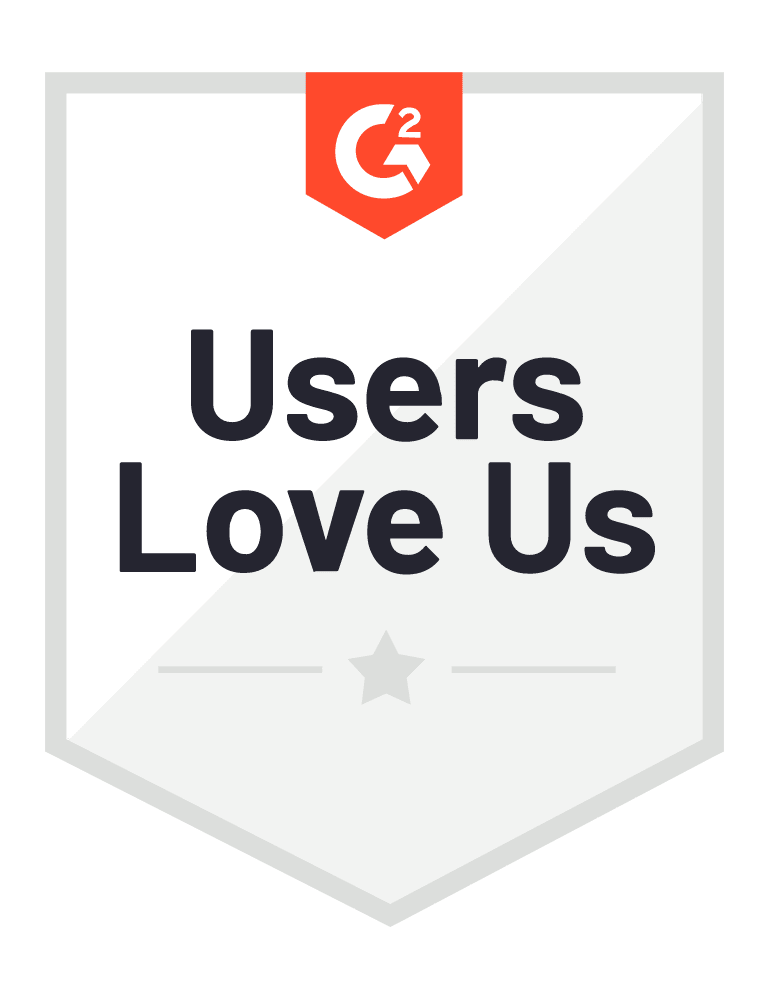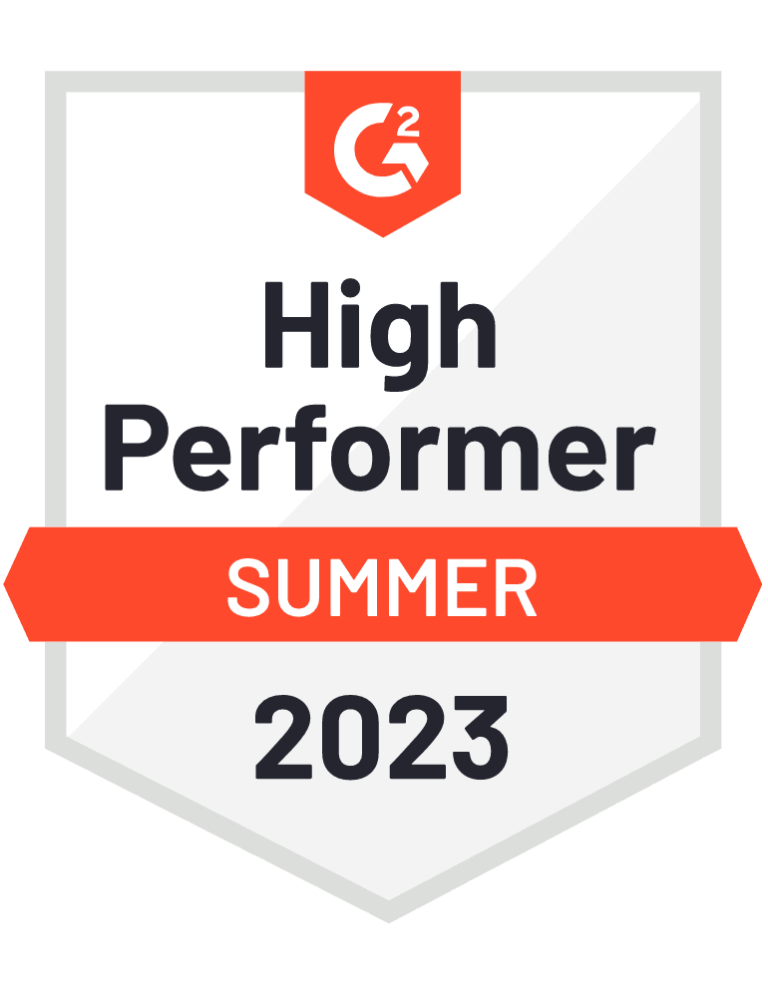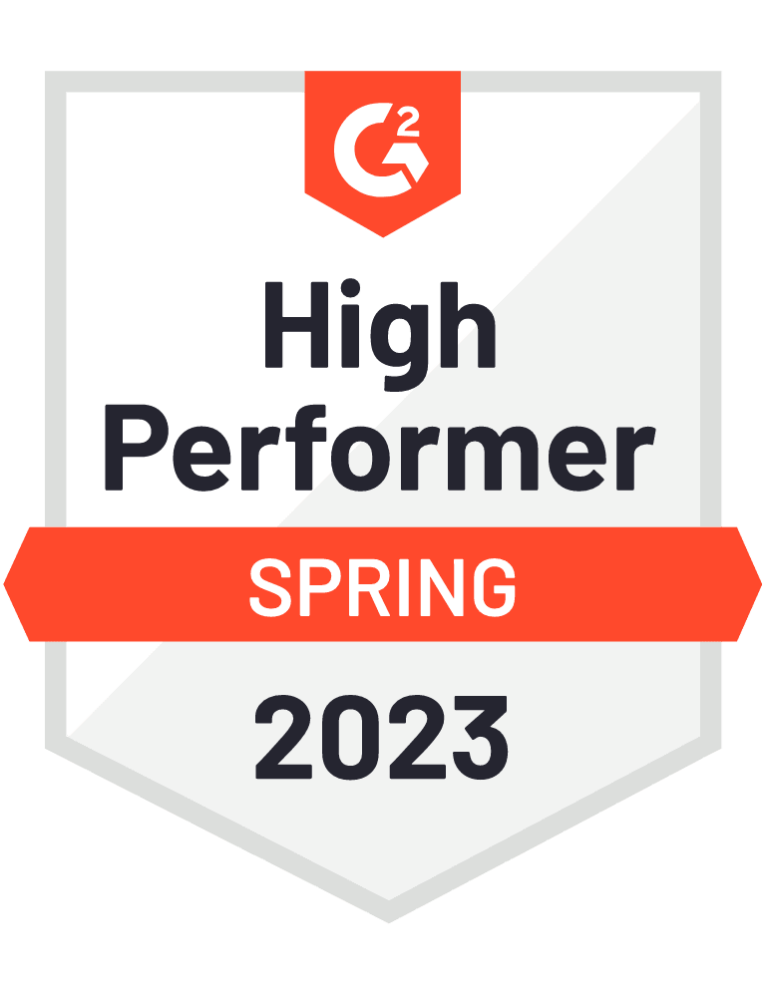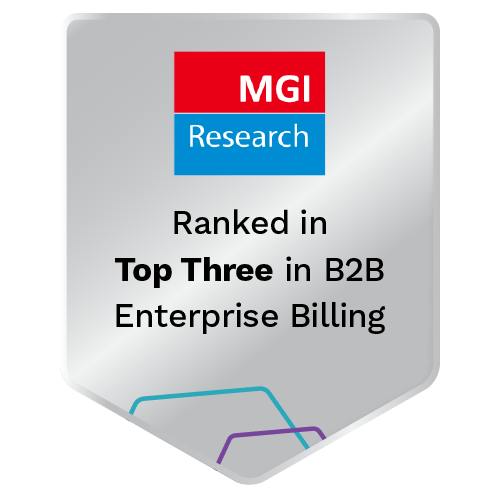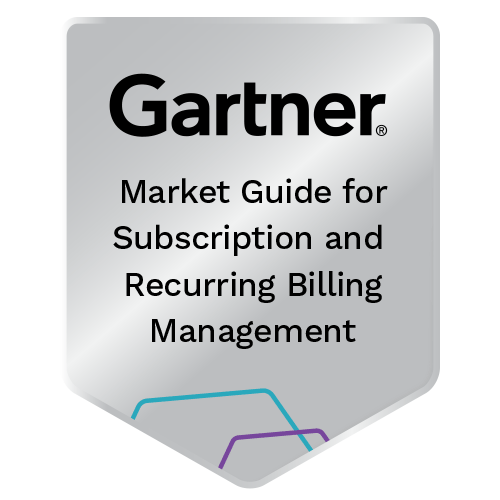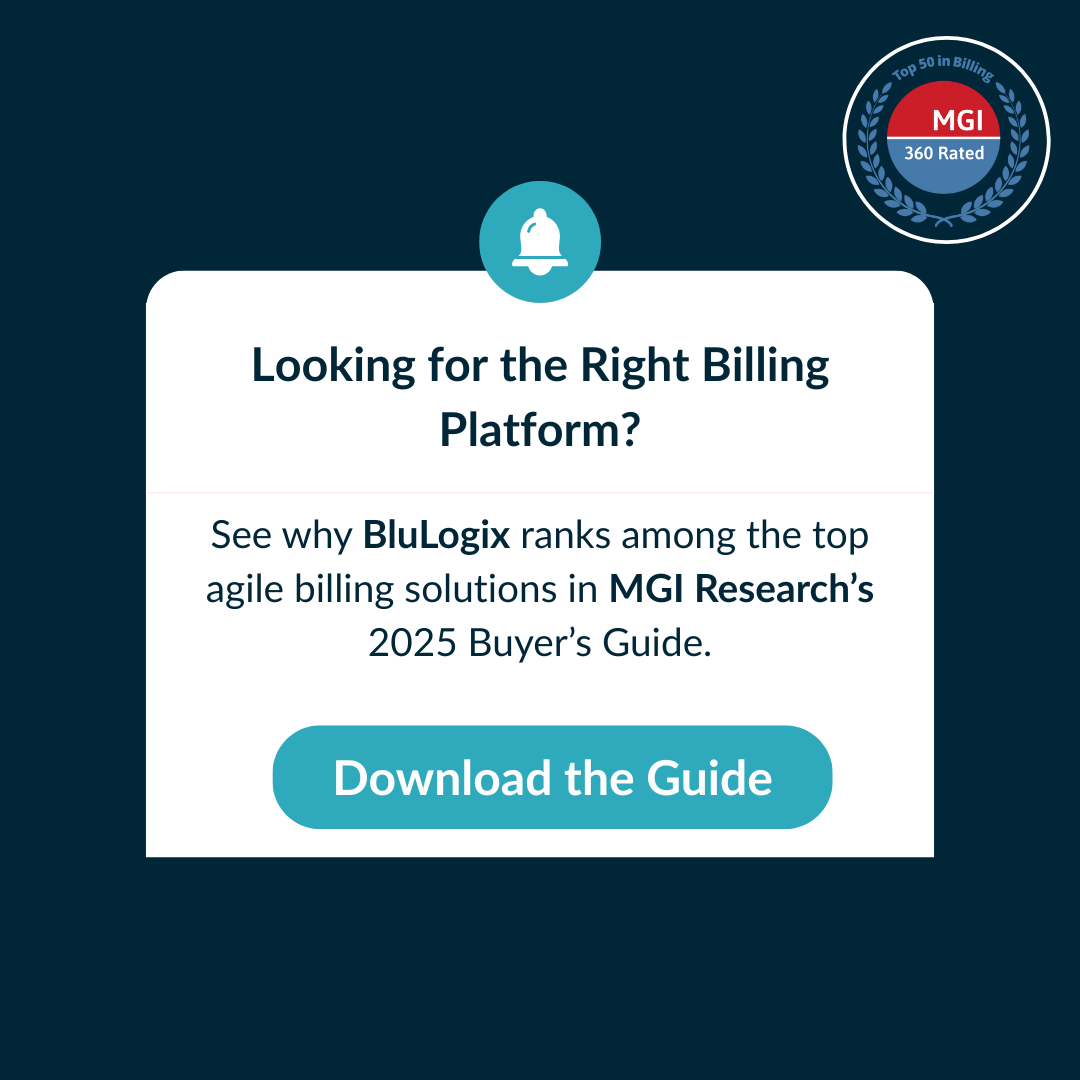Blulogix Whitepaper
Scale Without Limits: Automating Channels, Pricing, and Revenue Optimization in 2025
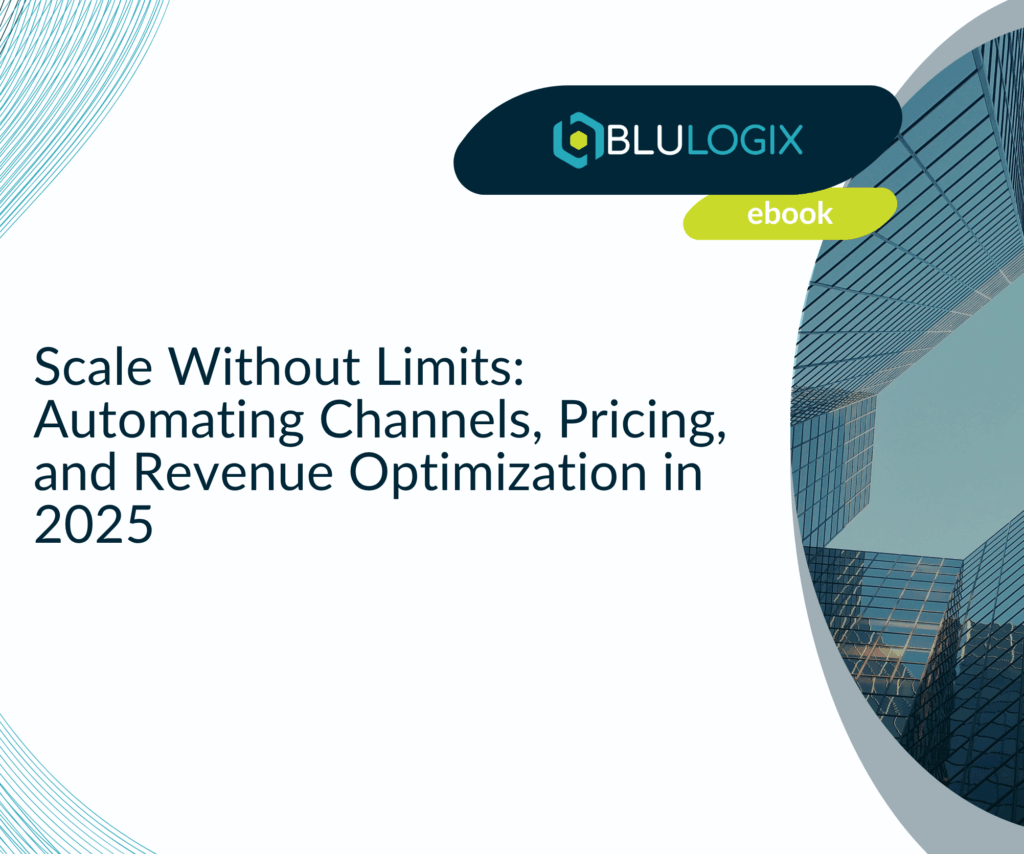
Table of Contents
In 2025, growth isn’t determined by the size of your market—it’s determined by how well you operationalize revenue. Businesses with strong products and demand pipelines often find themselves stalled, not because of lack of opportunity, but because of bottlenecks in monetization. Disconnected partner operations, rigid pricing models, manual workflows, and poor revenue visibility are no longer back-office headaches—they are front-line growth killers.
Scaling successfully in this environment requires a deliberate shift: stop fighting fires in billing and revenue operations and start building an integrated, growth-ready monetization engine. This isn’t about complexity; it’s about removing friction from the systems and processes that drive revenue so you can capture opportunities faster, close deals without operational roadblocks, and expand into new markets with confidence.
When monetization workflows are streamlined, pricing models are flexible, and revenue insights are actionable, growth stops being reactive and starts becoming repeatable.
This whitepaper outlines 9 smart ways to remove the friction that holds your business back, from partner orchestration to pricing automation, from compliance management to revenue health tracking. Each of these strategies has a single purpose: to give your business the operational agility to scale—without adding tools, headcount, or chaos.
By implementing these strategies, businesses can:
- Shorten their quote-to-cash cycles by automating the revenue engine.
- Reduce revenue leakage by identifying and eliminating unbilled or unpaid transactions.
- Optimize channel operations to accelerate partner-driven sales.
- Adopt dynamic pricing models that align revenue with value delivered.
- Gain real-time visibility into financial performance for faster, data-driven decision-making.
Your competitors are already investing in monetization as a growth lever. This is how you catch up—or stay ahead.
The Managed Service Provider (MSP) industry is facing a new era of complexity and opportunity. For decades, MSPs built their businesses around recurring monthly revenue, fixed-rate contracts, and bundled service packages. This model worked in an environment where customers valued predictability above all else, accepting standardized agreements that delivered IT support, security, network management, and cloud services under a single, flat monthly fee.
But that landscape has shifted dramatically.
Today’s customers expect their technology partners to be flexible, transparent, and responsive to real business needs. They want billing that reflects the actual services they use, tailored pricing that adapts to their growth or contraction, and invoices that align with their organizational structures. Enterprise clients want charges split by department, business unit, or region. Channel partners want white-labeled portals, custom discount structures, and real-time usage insights. Meanwhile, vendors change pricing terms and licensing models regularly, requiring MSPs to reconcile external costs with internal revenue, ensuring they aren’t eroding margins through overlooked discrepancies.
The reality is that billing has become more than just a monthly operational chore—it’s now at the heart of customer trust, partner loyalty, and long-term profitability. It reveals whether an MSP is treating its clients and partners as valued relationships or simply as revenue streams. A modern billing platform and process can empower customers with data, help partners expand faster, and give MSPs the visibility they need to forecast revenue accurately and protect margins. Conversely, outdated billing approaches create disputes, breed distrust, and waste valuable staff resources on manual reconciliations and error correction.
The use cases facing MSPs in this evolving environment are as varied as they are challenging. They include managing the complexities of cloud services billing, where usage data comes from disparate vendor systems with inconsistent formats. They include building and managing multi-vendor bundles, ensuring customers receive a single, clean invoice for packages built from multiple providers. They involve supporting customers with layered hierarchies, where departments, regions, or subsidiaries each need separate billing data while executives expect consolidated reports.
MSPs must also rethink how they support indirect sales through channel partners, offering tools that make partner operations seamless while retaining control over pricing and discounting. Meanwhile, vendor reconciliation is an ongoing struggle—MSPs must ensure that the invoices they receive from vendors align with the charges they pass on to customers, closing the gap that can erode margins over time. And at the foundation of it all is transparency: providing customers and partners with real-time access to usage, contract thresholds, and billing details that turn billing from a pain point into a strategic asset.
This whitepaper explores six essential use cases that illustrate these challenges and opportunities. Each section delves into a real-world problem MSPs face, describes the solutions industry leaders are implementing, and highlights the tangible benefits that come from transforming billing into a foundation for growth, trust, and operational excellence.
Streamline Your Channels to Accelerate Growth
Channel partner networks are one of the greatest opportunities for revenue expansion—but also one of the most common bottlenecks for scaling. When vendors, distributors, and resellers operate in disconnected silos, you face duplicated effort, inaccurate billing, and stalled growth. Instead of driving new revenue, your partner ecosystem ends up creating friction.
The solution is clear: simplify and automate channel management so every partner transaction, commission, and billing event happens seamlessly. When your operations move from spreadsheets and manual reconciliation to a centralized platform, you eliminate the inefficiencies that slow your business down and replace them with speed, visibility, and predictability.
How to Streamline Your Channels
- Centralize Partner Data: Manage every partner relationship, from contracts to performance metrics, in one system of record. With real-time dashboards for partners, you reduce back-and-forth emails, remove data silos, and give your partners clear visibility into their revenue and commission status.
- Automate Billing and Commissions: Manual commission tracking is one of the fastest ways to create disputes. Automated commission workflows not only ensure accurate payouts but also accelerate payment cycles, making it easier to build partner trust and loyalty.
- Support Multi-Tier Hierarchies: As you scale, partner ecosystems get deeper and more complex. By automating multi-tier pricing, discounts, and revenue sharing, you ensure each tier is managed consistently—without adding administrative overhead.
The Growth Impact
Streamlining channels is more than operational hygiene—it’s a growth strategy. Companies that centralize partner data and automate billing reduce manual work by up to 50%, cut disputes by half, and unlock faster time-to-revenue. By making it easier for partners to sell, bill, and get paid, you turn your channel ecosystem into a growth engine—not a bottleneck.
Tailor Pricing to Customers – Maximize Flexibility, Maximize Growth
Pricing isn’t just a number; it’s a growth lever. Businesses that rely solely on flat-rate pricing or rigid tiers often limit their ability to adapt to customer needs, leaving revenue on the table. Today’s buyers demand flexibility: hybrid pricing, tiered structures, and usage-based models that align cost with value. By tailoring pricing to customers, you not only win deals—you create long-term, scalable revenue streams.
How to Do It
- Adopt Hybrid Models: Combine recurring subscriptions with usage-based pricing. For example, pair a base fee with metered add-ons. This approach encourages customers to grow into higher spend while keeping entry-level pricing approachable
- Create Tiered Offerings: Design pricing that scales with customer size or feature needs. This makes it simple for customers to upgrade without friction, while also preventing churn by aligning price with perceived value.
- Leverage Data for Optimization: Use analytics to evaluate usage patterns and customer segments. With this data, refine your pricing strategies to reduce discounting, increase upsell opportunities, and ensure pricing evolves with market demand.
The Business Impact
- Higher Win Rates: Flexible pricing models reduce barriers for new customers.
- Increased Expansion Revenue: Customers naturally move up tiers or consume more usage.
- Stronger Retention: When pricing reflects value, customers see you as a partner, not just a vendor.
Modern pricing strategies aren’t about complexity—they’re about removing friction and unlocking growth. Businesses that optimize their pricing structures turn revenue predictability into a competitive advantage.
Leverage Usage-Based Pricing – Align Cost With Value
Usage-based pricing is no longer an optional strategy—it’s a competitive necessity. Businesses that tie revenue directly to customer consumption remove barriers to adoption while creating a model that scales as customers grow. Instead of locking customers into fixed commitments that often lead to churn, usage-based pricing allows them to pay for what they actually use, which builds trust and drives long-term revenue growth.
How to Do It
- First, implement a metering and mediation engine capable of accurately tracking every unit of usage—whether that’s transactions, devices, API calls, or minutes. Accurate data ensures billing transparency and eliminates disputes.
- Next, design usage tiers or thresholds that align with typical consumption patterns. This allows small customers to start at a low entry point while giving larger customers room to scale without friction.
- Finally, integrate usage data into your reporting and forecasting workflows. Real-time visibility into usage trends helps you predict revenue, identify upsell opportunities, and avoid surprise overages that frustrate customers.
The Business Impact
By aligning cost with value, businesses improve customer satisfaction and reduce churn. Instead of “bill shock,” customers see a direct correlation between their consumption and their bill. This approach also creates a natural upsell engine—growth in customer usage leads directly to revenue growth, without requiring additional sales effort.
Usage-based pricing also opens the door for new markets. Customers who may hesitate to commit to a full subscription can start small and expand gradually, lowering acquisition barriers while increasing lifetime value.
In short, usage-based pricing creates predictable, scalable growth by turning your pricing model into a driver of customer adoption and retention.
Automate Partner Orchestration – Scale Without Adding Overhead
As partner ecosystems expand, manual processes quickly break down. Managing contracts, approvals, billing, and revenue-sharing workflows through spreadsheets or disconnected systems results in errors, disputes, and delays. To scale your partner network effectively, you must automate partner orchestration.
How to Do It
- Start by centralizing partner onboarding, compliance checks, and contract management into a single system. This reduces administrative overhead and ensures that every partner follows the same standardized workflow.
- Next, implement automated approval processes for discounts, commissions, and payouts. By embedding these workflows into your platform, you eliminate back-and-forth communication and reduce disputes.
- Finally, create self-service portals for partners. Give them access to real-time data on sales, commissions, and payouts, empowering them to manage their business without constant manual intervention.
The Business Impact
Automation reduces operational friction and accelerates partner enablement. Instead of wasting time resolving disputes, your teams can focus on strategic growth. Partners benefit from transparency, faster payouts, and simplified processes, which increases loyalty and performance.
This shift isn’t just operational—it’s financial. Automated partner orchestration cuts administrative labor costs, speeds up revenue collection, and positions your business to add new partners without adding headcount.
When partner workflows run smoothly, growth is no longer bottlenecked by manual effort—it becomes an automated engine for scaling revenue.
Simplify Compliance – Reduce Risk, Enable Growth
Compliance is often treated as a burden, but when managed strategically, it becomes a growth enabler. Complex tax rules, regional billing regulations, and audit requirements can slow down your business if handled manually. Automating compliance not only reduces risk but also accelerates your ability to expand into new markets.
How to Do It
- The first step is to integrate tax calculation engines that automatically apply the correct rates for every jurisdiction. This eliminates errors and reduces audit risk.
- Next, establish clear reporting workflows for financial compliance, including revenue recognition. Automating these processes ensures that your finance team can focus on strategy rather than manual reconciliations.
- Finally, build compliance monitoring into your billing platform. Automated alerts for tax updates, contract obligations, or regulatory changes help you stay ahead of issues before they impact revenue.
The Business Impact
Simplifying compliance minimizes risk and increases your ability to scale globally. Instead of delaying expansion due to regulatory concerns, your organization can enter new regions quickly with confidence.
Compliance automation also improves financial accuracy. By eliminating manual tax and reporting errors, you avoid costly penalties and create a clear audit trail.
Ultimately, compliance should not slow down growth. By making it an automated part of your monetization infrastructure, you remove a major barrier to scaling revenue.
Eliminate Bottlenecks and Revenue Leakage
Revenue leakage and operational bottlenecks are two of the biggest obstacles to sustainable growth. When billing processes are fragmented, approvals are manual, or data resides in disconnected systems, revenue is delayed or lost entirely. Eliminating these barriers is not just a financial fix—it’s the foundation for scaling revenue without adding overhead.
How to Eliminate Bottlenecks and Revenue Leakage
- Automate billing workflows: Replace manual approvals, reconciliations, and invoice generation with automated workflows that reduce human error and accelerate cash flow.
- Implement real-time revenue reconciliation: Align usage, billing, and payments in a single platform to ensure that every chargeable event is captured and invoiced.
- Streamline dispute resolution: Create automated exception-handling processes that quickly resolve disputes and prevent repeated revenue loss.
Why It Matters
Revenue leakage compounds over time. A few percentage points lost each month from missed charges, delayed invoicing, or manual errors can add up to millions annually. More importantly, bottlenecks slow down your ability to scale—turning what should be a growth engine into a drag on financial performance.
Business Results
Organizations that systematically address these issues report faster billing cycles, reduced revenue leakage by up to 15%, and a stronger foundation for predictable cash flow. By removing these barriers, businesses unlock capacity to grow without adding headcount or overhead.
Protect Renewals
Renewals are the lifeblood of recurring revenue businesses, yet many organizations treat them as an afterthought. Without the right processes and visibility, involuntary churn—caused by missed renewals, failed payments, or lack of proactive engagement—erodes revenue and creates unnecessary customer turnover.
How to Protect Renewals
- Automate renewal notifications: Trigger reminders and workflows 30, 60, and 90 days before renewal dates.
- Proactively manage payment failures: Implement automated dunning workflows to recover failed payments before accounts lapse.
- Monitor customer health: Use data-driven dashboards to identify at-risk accounts and address issues before they impact retention.
Why It Matters
Acquiring new customers is far more expensive than retaining existing ones. By focusing on renewals, you maximize customer lifetime value (CLV) and reduce churn-related revenue loss. Proactive renewal management is not just a retention strategy—it’s a revenue growth multiplier.
Business Results
Companies with automated renewal processes see 10–20% improvements in retention and significantly lower churn. This predictable revenue stream creates a stable foundation for long-term growth.
Monitor Revenue Health
You can’t optimize what you can’t measure. Monitoring revenue health means having real-time visibility into your billing performance, payment collection, and customer trends—all in one place. This allows you to spot issues early and take corrective action before they impact your bottom line.
How to Monitor Revenue Health
- Implement real-time dashboards: Consolidate billing, payments, and churn metrics into a single source of truth.
- Track KPIs that matter: Focus on actionable metrics like revenue leakage rate, days sales outstanding (DSO), churn, and renewal rates.
- Automate reporting: Eliminate spreadsheet-driven reporting with automated, drill-down analytics that surface actionable insights.
Why It Matters
Revenue monitoring is not just about financial reporting—it’s about control. When you have real-time visibility into revenue health, you can respond to trends faster, prevent cash flow problems, and make confident, data-driven decisions.
Business Results
Organizations that track revenue health at this level reduce financial blind spots, improve forecasting accuracy, and increase revenue recovery. This proactive approach turns revenue management into a competitive advantage.
Plug Revenue Leaks
Even well-run businesses lose revenue through overlooked process gaps, unbilled services, or unpaid invoices. Plugging these leaks requires a systematic approach to identifying where revenue is slipping through the cracks and applying technology and automation to seal them.
How to Plug Revenue Leaks
- Audit your revenue workflows: Identify billing exceptions, missed usage charges, and reconciliation gaps.
- Automate unbilled item capture: Use mediation and rating tools to ensure all chargeable events are billed.
- Enforce payment discipline: Integrate payment workflows and collections to reduce write-offs and bad debt.
Why It Matters
Even a 2–3% revenue leakage rate can significantly impact profitability. By addressing these hidden gaps, businesses can reclaim lost revenue without acquiring new customers or increasing pricing.
Business Results
Plugging revenue leaks improves overall revenue yield, enhances profitability, and creates confidence in financial reporting. Companies that implement automated leak detection and correction often recapture millions in previously lost revenue.
Integrate Your Monetization System
Disconnected systems create friction, delay cash flow, and increase administrative costs. Integrating your monetization system with your CRM, ERP, and financial tools provides a unified platform for managing the entire revenue lifecycle—quote to cash—without manual workarounds.
How to Integrate Your Monetization System
- Connect CRM and billing: Ensure customer, product, and contract data flow seamlessly between sales and billing.
- Automate ERP and finance handoffs: Eliminate manual journal entries by integrating billing with ERP and general ledger systems.
- Unify data for analytics: Create a single source of truth for revenue reporting across departments.
Why It Matters
When systems don’t talk to each other, revenue gets delayed, errors increase, and scaling becomes painful. Integration not only streamlines operations but also improves customer experience by eliminating delays and discrepancies in invoicing and payment processing.
Business Results
Integrated monetization stacks cut administrative effort by 30–50%, reduce time-to-cash, and enable growth without operational bottlenecks. This foundation allows finance and revenue teams to shift their focus from manual tasks to high-value strategic initiatives.
Conclusion: From Bottlenecks to Growth Leverage
The organizations that will dominate 2025 and beyond aren’t the ones with the biggest budgets—they’re the ones that remove operational friction and turn monetization into a strategic advantage.
The nine strategies in this whitepaper are more than incremental process improvements. They represent a shift in mindset:
- From managing partners manually to orchestrating them at scale.
- From static pricing to revenue-aligned billing models.
- From compliance burden to automated governance.
- From reactive revenue management to proactive growth intelligence.
Every revenue team has a choice: keep patching together systems and processes that slow you down—or build a monetization engine designed to grow with you.
By unifying your billing, partner, pricing, and revenue operations into a single scalable foundation, you eliminate the hidden bottlenecks that quietly drain growth potential. You gain speed, accuracy, and confidence—not only in your ability to capture revenue but in your ability to accelerate it.
Growth isn’t just about selling more. It’s about building the operational backbone that allows you to sell faster, bill smarter, retain longer, and scale without limits.
Now is the time to stop treating monetization as a back-office task. Make it your growth strategy.
Reviews

Michael R.
President, Allnet Air Inc. - Telecommunications
Best Outsourced Billing for Mobility

Karen R.
Manager, Cloud Billing - Computer Software
BluLogix has been a great partner.
“Over the last several years, I have seen continual enhancements and additions to the platform. BluLogix has created a comprehensive solution for users. They provide great communication regarding upgrades and address concerns thoroughly and timely.”

Sara K.
Marketing, Graphic Design & Social Media Management - Marketing and Advertising
Fantastic platform. Recommend!
Industry Leaders
Reviews

Michael R.
President, Allnet Air Inc. - Telecommunications
Best Outsourced Billing for Mobility

Karen R.
Manager, Cloud Billing - Computer Software
BluLogix has been a great partner.
“Over the last several years, I have seen continual enhancements and additions to the platform. BluLogix has created a comprehensive solution for users. They provide great communication regarding upgrades and address concerns thoroughly and timely.”

Sara K.
Marketing, Graphic Design & Social Media Management - Marketing and Advertising
Fantastic platform. Recommend!

